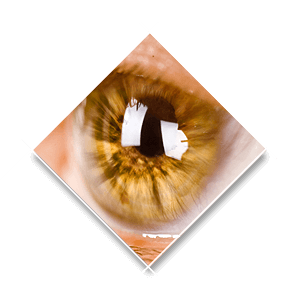A cataract is a clouding of the lens in the eye due to protein buildup in the body which leads to reduced vision and loss of sight if left untreated. There are three primary types of cataracts: nuclear sclerotic, cortical and posterior subcapsular.
Nuclear Sclerotic Cataracts
A nuclear cataract is the most common type of cataract, beginning with a gradual hardening and yellowing of the central zone of the lens also known as the nucleus. Over time, this hardening and yellowing will expand to the other layers of the lens.
As this type of cataract progresses, it changes the eye’s ability to focus and close-up vision (for reading or other types of close work) may temporarily improve. This symptom is referred to as second sight, but the vision improvement it produces is not permanent.
A nuclear sclerotic cataract progresses slowly and may take several years of gradual development before it begins to affect vision.
Cortical Cataracts
A cortical cataract forms in the shell layer of the lens known as the cortex and gradually extends its “spokes” from the outside of the lens to the center. These fissures can cause the light that enters the eye to scatter, creating problems with blurred vision, glare, contrast and depth perception. People with diabetes are at risk for developing cortical cataracts.
Posterior Subcapsular Cataracts
Primarily affecting one’s reading and night vision, this type of cataract begins as a small opaque or cloudy area on the posterior (back surface) of the lens. It is called subcapsular because it forms beneath the lens capsule which is a small sac or membrane that encloses the lens and holds it in place.
Subcapsular cataracts can interfere with reading and create halo effects and glare around lights. People who use steroids or have diabetes, extreme nearsightedness, and/or retinitis pigmentosa may develop this type of cataract. Subcapsular cataracts can develop rapidly and symptoms can become noticeable within months.
If you are experiencing vision problems in Dallas and suspect that you may have a cataract, contact Vision Quest at 214-361-1443 or visionquestdallas.com today to schedule an appointment with one of our doctors.












